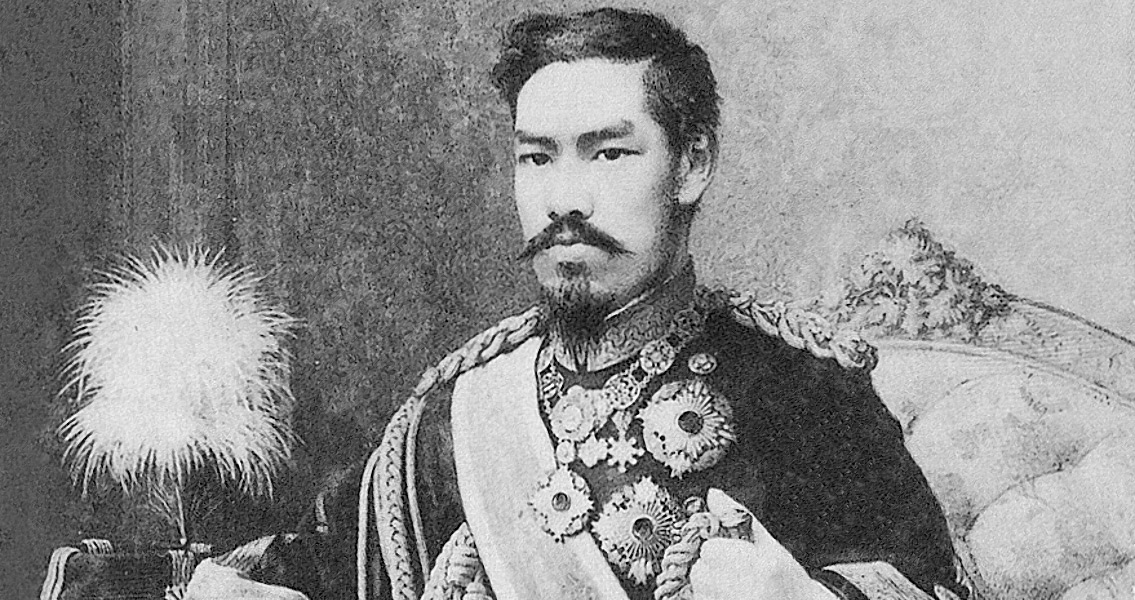<![CDATA[The 3rd January 1868 marked the start of the Meiji Restoration in Japan, a period that would see the return to power of the Emperor and the country established as a major economic, industrial and military force. By 1868 it had been seven centuries since the reign of Japan's previous emperor. The Tokugawa period, from 1603 to 1867, saw Japan organised around a feudal system, ruled over by the Tokugawa shogun (great general). The Tokugawa shoguns had presided over 250 years of relative peace and prosperity, a period that included gradual urbanisation and the formation of a merchant class. They also isolated Japan from western influences, particularly Christianity. In the middle of the nineteenth century concerns had started to grow about Japan's ability to compete internationally. The country's military was weak, technological development had lapsed, and despite the urbanisation of the Tokugawa period, Japan was still primarily agricultural. Most importantly, concerns were growing about the ability of Japan to continue resisting Western intervention. The European powers and the United States had forced Japan to sign a series of treaties that limited its control over its own international trade, and prevented foreigners committing crimes in Japan being tried in Japanese courts. Late in 1867 two anti-Tokugawa domains, Choshu and Satsuma, combined forces with the intention of toppling the Shogunate. Supported by patriotic samurai, historically hostile to Tokugawa authority, they set about restoring Japan's imperial family to power on 3rd January 1868. Restoration was directed in the name of Emperor Meiji, who was just fourteen years old in 1868. The leaders of the restoration adopted the slogan; "wealthy country, strong arms", and set about creating a modern nation state capable of competing with the West in terms of both military and economic strength. Dismantling the feudal system was seen as the crucial first step towards this process of modernisation. The Tokugawa period had seen power divided amongst hundreds of semi-independent feudal lords, preventing any kind of centralised organisation. The removal of feudalism was largely realised in 1871, when the old feudal domains were officially abolished and replaced with a prefecture system, all privileges linked with the old feudal class were also removed. Historians treat 1912, when Meiji died, as the end of the Meiji Restoration. Japan had undergone drastic changes socially, politically, economically and militarily. Disjointed feudalism had been replaced with a centralised, bureaucratic government and elected parliament. Massive improvements in education had benefited the entire population, rather than just members of certain classes. In 1872 a national army based on universal conscription was established. Thirty years later, the enormous potential of this new military was demonstrated in Japan's surprise victory over Russia in the Russo-Japanese War. Even the samurai, a group so synonymous with Japanese culture and central to the beginnings of the restoration, embraced modernity. As the nineteenth century came to a close, the warrior class had become just another anachronism from the feudal period. In 1876 a law was passed banning them from carrying swords. By the end of the nineteenth century many of them had cut their traditional hair styles, and taken on jobs in business and government. Perhaps more than anything else, this reveals just how extensive modernisation during the Meiji restoration had been. The Meiji restoration was pivotal in the development of modern Japan. The consequences of events started on the 3rd January 1868 helped shape Japan's history throughout the twentieth century, and into the twenty first. ]]>
The Start of the Meiji Restoration
